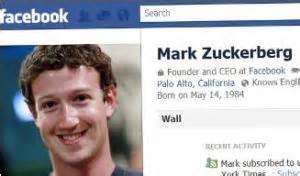 It’s not just people that are addicted to Youtube, according to a group of scientists from the University of Maryland.
It’s not just people that are addicted to Youtube, according to a group of scientists from the University of Maryland.
 It’s not just people that are addicted to Youtube, according to a group of scientists from the University of Maryland.
It’s not just people that are addicted to Youtube, according to a group of scientists from the University of Maryland.
 In a bid to outdo Google’s YouTube, Facebook said yesterday it had bought San Diego company QuickFire.
In a bid to outdo Google’s YouTube, Facebook said yesterday it had bought San Diego company QuickFire.
 Gangnam Style, the South Korean pop star’s enduring video phenomenon from 2012, nearly broke YouTube by getting more than 2,147,483,647 views and creating a sort of Y2K fault.
Gangnam Style, the South Korean pop star’s enduring video phenomenon from 2012, nearly broke YouTube by getting more than 2,147,483,647 views and creating a sort of Y2K fault.
The site’s original view counter was not designed to take that many hits and its developers could not believe that a video would be watched by numbers greater than a 32-bit integer (2,147,483,647 views).
Google, which owns YouTube, in a blog post this week. ” ‘Gangnam Style’ has been viewed so many times we had to upgrade!”
When programmers built YouTube nine years ago, they probably never imagined that a video on the young platform — back when several million views was considered a smash hit — might be watched more than 2.1 billion times.
As of late Wednesday morning, “Gangnam Style” had breached the barrier, showing more than 2,152,512,000 views.
Fortunately YouTube did not collapse with smoke pouring out of a server. YouTube’s software engineers saw the problem coming and recently updated to a 64-bit view counter across the site, Google spokesman Matt McLernon said. The view counter can now go up to 9 quintillion views (9,223,372,036,854,775,808, to be exact), which should hold PSY for a while.
“Nothing actually broke,” McLernon said. “There was never anything that actually went wrong. It’s just people having fun with the language.”
PSY’s trademark horse-riding dance video, is almost 2½ years old and was uploaded in July 2012, “Gangnam Style” was the first clip to hit a billion views and is the most-watched video of all time. It was even the 5th most-played video on YouTube this past summer.
“People still play this video an absurd number of times,” he said.
To commemorate the occasion, YouTube has added a new wrinkle: If you hover your cursor over the “Gangnam Style” view counter, the numbers spin backwards and forwards.
 Software giant Microsoft has been given permission to disrupt malware by known as Bladabindi and Jenxcus, writes Nick Farrell.
Software giant Microsoft has been given permission to disrupt malware by known as Bladabindi and Jenxcus, writes Nick Farrell.
Although Vole has worked with the FBI and others to disrupt communications channels between hackers and infected PCs, it is rare to act on its own. This is also the first high-profile case involving malware written by developers outside of Eastern Europe.
The operation, which began on Monday under an order issued by a federal court in Nevada, Microsoft said the two malwares operated in similar ways and were written and distributed by developers in Kuwait and Algeria.
Microsoft said that it would take days to determine how many machines were infected. Voles’ own, anti-virus software alone has detected some 7.4 million infections over the past year and is installed on less than 30 percent of the world’s PCs.
The developers marketed their malware over social media, including videos on YouTube and a Facebook page. They posted videos with techniques for infecting PCs.
The court order allowed Microsoft to disrupt communications between infected machines and Reno, Nevada-based Vitalwerks Internet Solutions.
Boscovich said about 94 percent of all machines infected with the two viruses communicate with hackers through Vitalwerks servers.
Registries will direct suspected malicious traffic to Microsoft servers in Redmond, Washington, instead of to Vitalwerks.
Vole will then filter out communications from PCs infected with another 194 types of malware also being filtered through Vitalwerks.
Vitalwerks and its operational subsidiary No-IP claim to have a very strict abuse policy. To be fair Microsoft has not accused Vitalwerks of involvement in any cybercrime, though it alleges the company failed to take proper steps to prevent its system from being abused.